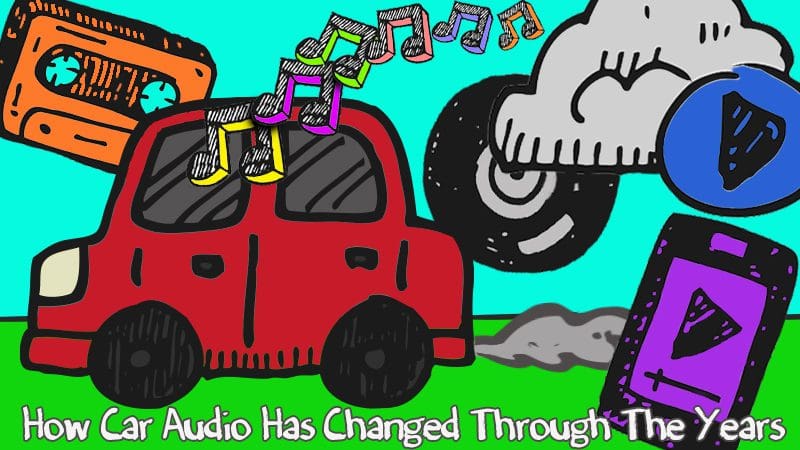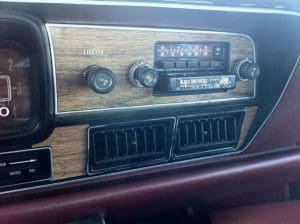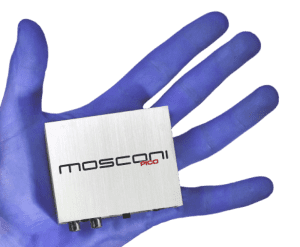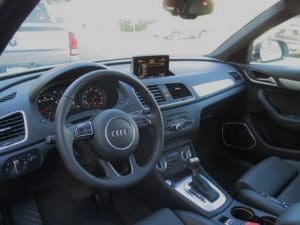 If you have been around the mobile electronics industry for more than a decade, then you may have noticed some significant changes. New technologies make our time behind the wheel safer, more entertaining and more productive. Many products offer better performance and efficiency compared to their originals. Innovations and technological advancements let us do things that simply were not feasible decades ago. This article looks at some of the most significant changes that have taken place in the car audio industry over the past few decades.
If you have been around the mobile electronics industry for more than a decade, then you may have noticed some significant changes. New technologies make our time behind the wheel safer, more entertaining and more productive. Many products offer better performance and efficiency compared to their originals. Innovations and technological advancements let us do things that simply were not feasible decades ago. This article looks at some of the most significant changes that have taken place in the car audio industry over the past few decades.
The Mighty Head Unit

The introduction and popularity of the Apple iPod signaled a massive change in the philosophy of music lovers. While this handy device could be considered the “nail in the coffin” for the record store industry, it launched new levels of convenience for music accessibility. The mobile electronics industry embraced the iPod, and now, support for it is standard on all mid- to high-level source units. Similar support for Android-based smartphones has also become almost a standard feature in the last few years.
Miniaturization and the advancement of computer processing have given us full-color touchscreen interfaces with fancy animated graphics. We can watch a DVD or digital media movie while having lunch in the car. Portable navigation systems have replaced paper maps to help us travel safely and more efficiently.
 Recently, we have introduced connected technology solutions. Internet connectivity is a feature in many new car radios, most often via your personal smartphone. Access to the Internet allows you to stream music from online resources like Google Play or iTunes Radio. Apple and Android have developed interfaces for their smartphones to enable drivers to send and receive text messages, make phone calls, select navigation destinations, and choose the music they want to listen to by just talking to the radio. CarPlay and Android Auto are the current “big thing” in multimedia source units.
Recently, we have introduced connected technology solutions. Internet connectivity is a feature in many new car radios, most often via your personal smartphone. Access to the Internet allows you to stream music from online resources like Google Play or iTunes Radio. Apple and Android have developed interfaces for their smartphones to enable drivers to send and receive text messages, make phone calls, select navigation destinations, and choose the music they want to listen to by just talking to the radio. CarPlay and Android Auto are the current “big thing” in multimedia source units.
Those Oh-so-fun Subwoofers!

What could you change when it comes to the design of a speaker? Materials for cones, suspensions, surrounds and motors haven’t advanced all that much, and because a subwoofer reproduces only low frequencies, things like cone materials don’t have a dramatic effect on performance. What has changed is our ability to model the behavior of the magnetic field within the speaker. Being able to optimize the geometry of the magnetic field allows designers to create subwoofers that are more efficient and that offer better performance with less distortion at high excursion levels.
The size and location of the subwoofer enclosures we use in our vehicles have become and more important. Back in the “good old days,” if you wanted big bass, you had to give up your trunk. Now, many subwoofers are designed to play nice and low in a very small and shallow enclosure. Using these subwoofers allows your installer to create compact solutions that will fit in a spare-tire well, the corner of your trunk or even in the footwell of some vehicles. We should be clear; there is a trade-off with these subs – they often require more power to produce the same output as a “conventional” subwoofer, but power is inexpensive these days.
Amplifiers, Smaller, More Power

Power is cheap. You can buy a great-quality 1,000 watt subwoofer amplifier for around $500. Decades ago, a 1,000 watt amp was among the biggest amps available, and it cost several thousand dollars. That amp was also the size of a skateboard and consumed a lot of power. Modern amplifiers are much smaller and much more efficient, sound better and consume less power. A lot of people credit the increase in efficiency to Class D designs. While switching to Class D for many applications makes sense, there have been efficiency improvements thanks to being able to use small microcontrollers and high-tolerance components in a Class AB amp.
In the past few years, more and more companies have been offering amplifiers with built-in advanced signal processing. On the most basic of amplifiers, we have crossovers and bass boost circuits. More advanced amplifiers offer both high- and low-pass filters on the same channel for midbass and midrange applications. Some amplifiers even provide low-frequency signal restoration processing. A whole other class of amplifiers on the market has built-in DSP processing. Some are so advanced that they don’t have a single analog adjustment on them.
Signal Processing Moves To Digital
Years ago, signal processing meant you had an EQ and a crossover in your car. These in-dash processors were made popular by the 1/2-DIN equalizer – a 1×7-inch EQ that would mount in the dash above or below your radio. These little EQs offered as many as 11 bands of graphic equalization to let you “tune” your system. Some had subwoofer level controls and crossovers built in.
 The next step in processing was the stand-alone processor – usually either an equalizer or a crossover, sometimes both. These were the size of a medium-sized hardcover book and gave installers much more precise control over system tuning. The drawback was their physical size. They took up a lot of room.
The next step in processing was the stand-alone processor – usually either an equalizer or a crossover, sometimes both. These were the size of a medium-sized hardcover book and gave installers much more precise control over system tuning. The drawback was their physical size. They took up a lot of room.
Almost all of these are gone now, replaced by stand-alone DSP processors. These seemingly magic black boxes replace those old stand-alone equalizers and crossovers, and include options like signal delay and the ability to switch between different settings at the flick of a switch.
Modern signal processing has allowed installers to use signal delays to optimize seemingly unconventional mounting locations for speakers to produce an amazingly accurate soundstage.
Speaker Placement Becomes Less Critical
In the past, if you wanted a great soundstage in your car, then you had to work with placement to equalize the difference in path lengths between the front speakers. Autosound competitors would go to great lengths to move seats as far back into the vehicle as possible, and some even built vehicles with a single seat located in the center. It was all somewhat silly because that effort never translated into value or performance for the consumer. All consumers could get were kick-panel–mounted speakers or a compression horn under the dash to aid in equalizing distances.

With the assistance of modern signal processing, installers can use factory locations, then delay the signal going to the closest speakers to put you in the center of them.
Another speaker location that has become popular is the A-pillar speaker pod. A nice midrange and tweeter up high and far forward in the vehicle can help create a deep and wide soundstage. The drawback with this approach is that it only works for one seat. If it is set up for the driver’s seat, the soundstage for the passenger seat is compressed into the right-side speaker location.
Very soon, the newest of processors will offer provisions to make every seat in the car sound great using an up-mixer and a center channel, just like the one in your home theater. Now, both front seats and even passengers in the rear can experience an even and focused soundstage across the dash of the vehicle.
Modern Speakers Refined
Like subwoofers, speakers haven’t changed dramatically since the first fixed-magnet, moving-coil speaker was created in 1925. Speakers have improved in efficiency and accuracy thanks to better materials for surrounds, better adhesives and dramatically better processes that help speaker manufacturers build more-consistent products. The real performance upgrades have come in the optimization of a speaker’s motor assembly with respect to the interaction between the voice coil and the magnetic field.
As a speaker cone moves in and out, the magnetic field strength varies. This causes distortion. The same goes for the suspension system: Being able to model the behavior of different surrounds and spiders allows designers to produce transducers that are more linear and, thus, create less distortion.
The Incredible Car Audio Evolution
Overall, the latest innovations and technologies have moved the mobile electronics industry to a point where the modern in-vehicle infotainment system performs at a level that could not be conceived of even a decade ago. If you want to find out about the latest technologies or products, drop into your local mobile electronics specialist. They would be happy to show you the latest and greatest offerings for your vehicle.

Leave a Reply